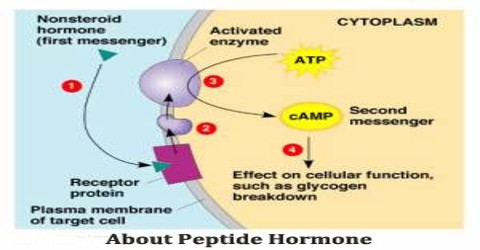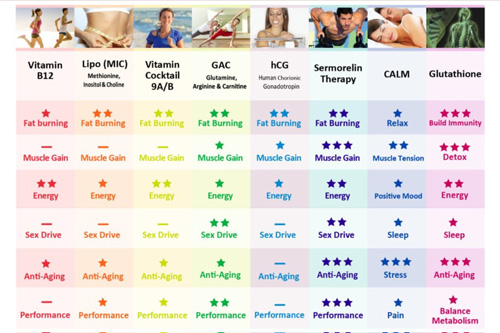Types of Growth Hormone Releasing Hormones (GHRH)
Growth Hormone Releasing Hormones (GHRH) are essential for amplifying the effects of Growth Hormone Releasing Peptides (GHRP) to stimulate the release of growth hormone. Here’s a breakdown of the most common types of GHRH:
-
- GRF(1-44): With a short half-life of just 5-10 minutes, GRF(1-44) quickly stimulates the pulse of growth hormone release.
- GRF(1-29) – Sermorelin: Similar to GRF(1-44), Sermorelin has a half-life of 5-10 minutes, providing a rapid effect in growth hormone release.
- Modified GRF(1-29) / CJC-1295 (without DAC): This version has a longer half-life, typically around 30 minutes, allowing for an extended pulse of growth hormone.
- CJC-1295 (with DAC): The longest-lasting option, CJC-1295 with DAC has a half-life measured in days, providing sustained growth hormone release.
How Long Do GHRH Pulses Last?
Growth hormone pulses initiated by GHRH typically last less than 30 minutes, during which the body utilizes the full potential of the growth hormone release. After this period, another pulse can’t be generated for about 2.5 to 3 hours.
Key Takeaways:
-
- Longer-acting GHRH (lasting over 30 minutes up to 3 hours) doesn’t offer additional benefits.
- Administering GHRH during natural growth hormone waves, especially during rising levels, will result in a higher peak of growth hormone release compared to administering it during troughs.
By understanding the different types of GHRH and their effects, individuals can optimize their approach to growth hormone therapy for maximum benefits. Growth Hormone Peptides

Types of Growth Hormone Releasing Peptides (GHRP)
Growth Hormone Releasing Peptides (GHRP) are effective initiators of growth hormone (GH) release. Here’s an overview of the most common GHRPs:
-
- Ipamorelin: A potent but mild GHRP, Ipamorelin has minimal impact on cortisol and prolactin, even at higher doses. It is known for its mild effects on growth hormone release.
- GHRP-6: GHRP-6 is more powerful in stimulating growth hormone release than Ipamorelin. It does not affect cortisol or prolactin up to a dose of 100mcg, with minimal increases at higher doses.
- GHRP-2: Slightly more potent than GHRP-6, GHRP-2 has a stronger impact on cortisol and prolactin levels at all dosing ranges, with levels reaching the high normal range.
- Hexarelin: The strongest GHRP, Hexarelin is more potent than GHRP-2. It significantly affects cortisol and prolactin at all dosing levels, often pushing these hormones to the upper normal range.
Desensitization and Usage of GHRPs
-
- Desensitization: GHRPs can become less effective over time with continuous use. Ipamorelin and GHRP-6 show minimal desensitization if taken with breaks of at least 2 hours between doses. GHRP-2 may desensitize at higher doses, while Hexarelin is prone to desensitization even with short breaks after 14 days of continuous use.
- Managing Desensitization: If desensitization occurs, a short break of several days can help restore sensitivity.
Growth Hormone Releasing Peptides (GHRP) vs. Growth Hormone Releasing Hormone (GHRH)
GHRPs create a larger, more consistent growth hormone pulse than GHRH, without needing to align with the body’s natural growth hormone cycles (waves or troughs). Growth Hormone Peptides
How Much GHRP Should Be Used?
-
- The typical saturation dose is 100mcg or 1mcg/kg for most GHRPs, though purity should be considered.
- Dosage adjustments: If the peptide is not 100% pure, it may be recommended to round up to 150mcg for optimal results.
How Long Should GHRP Be Used?
Studies suggest no adverse effects with 4-8 weeks of use, followed by a 4-week break to ensure continued effectiveness without side effects. Growth Hormone Peptides
Combining GHRH and GHRP for Synergistic Effects
The concurrent use of GHRH and GHRP has a synergistic effect, where the combined impact on growth hormone release is greater than the sum of each alone. For example, GHRH might release a growth hormone amount quantified as “2,” while GHRP contributes a “4,” leading to a total release of “12” rather than “6.” Growth Hormone Peptides
Can GHRH and GHRP Be Used Alone?
-
- GHRH Alone: Although effective, GHRH requires low levels of Somatostatin (a growth hormone-inhibiting hormone) to function optimally. Administering GHRH during natural growth hormone troughs can result in limited effects.
- GHRP Alone: GHRPs, on the other hand, are more predictable and capable of creating a larger growth hormone pulse on their own, making them effective without regard to natural growth hormone cycles. Growth Hormone Peptides
Typical Protocols for GHRH and GHRP
-
- Conservative Protocol:
-
- GHRP: 100-200mcg, 5-7 days a week, via subcutaneous injections
- Can be administered once, twice, or up to four times daily, with at least 3 hours between doses.
-
- Aggressive Protocol:
-
- GHRP: 100-200mcg, 5-7 days a week, via subcutaneous injections
- GHRH: 100-300mcg, 5-7 days a week, via subcutaneous injections. Growth Hormone Peptides
- Multiple daily doses with at least 3 hours between each administration.
-
- Conservative Protocol:
Optimal Timing: Administering growth hormone peptides pre-bed provides restorative benefits, while higher doses or multiple doses throughout the day can enhance muscle growth, fat loss, and injury repair. Growth Hormone Peptides
Should Food Be Consumed Before or After Injection?
For maximum effectiveness, administer GHRP and GHRH on an empty stomach or with only protein in the stomach, as fats and carbohydrates can inhibit growth hormone release. Wait 20-30 minutes before eating to allow the growth hormone pulse to reach its peak.

